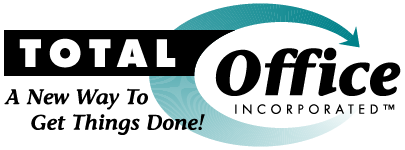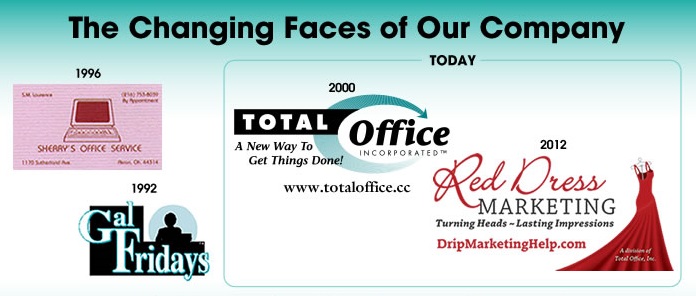“Where in the heck did I file that document?”

If you find that you’re often asking yourself “Where in the heck did I file that document?”, it’s probably not your memory failing but more likely that your filing system needs a makeover.
Common sense suggests that having a folder for every type of document would make finding a particular document quick and easy, which in theory is probably true. But the caveat to this is having to click into layers upon layers of folders to find the folder in which a document belongs. This often results in sticking a document somewhere other than where it belongs with the good intention of filing it later, when you have more time.
TOI Account Manager, Kelly Gosiewski notes; “If it takes more than three clicks to get to the folder you need, then you’ve probably gone too deep”. Like many things in life, simple is better and this holds true when creating a file folder structure.
The first and probably most important step in creating a simple, user-friendly, and effective file folder structure is to establish a simple, yet solid, file naming convention to do the organizing for you. For example, TOI uses the following file naming convention:
1. YY.MM.DD
2. Client last name
3. Client first initial
4. Document title
5. Signed or Unsigned (as applicable)
- 23.07.11 SMITH A IPS UNSIGNED
This file naming convention contains all the information needed to search and sort files with ease.
The second step is to establish the structure of the file folders. Remember, there’s no need to complicate the structure. Your file naming convention should be doing most of the organizing for you.
Your file structure should mimic how you work with clients.
For example, if your firm works with both AUM and Financial Planning clients and you want to keep the files for each type of client separate, your folder system should start with two main folders:
- AUM Clients and Financial Planning Clients.

- Within each main folder, create individual client folders:
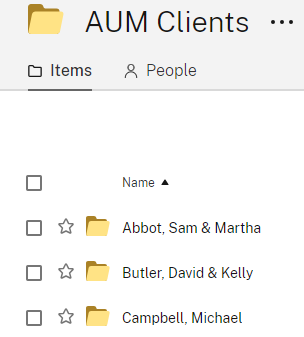
- Within each individual client folder, create broad-based folders. For example, within the AUM individual client folders, create a folder titled “Account forms” where you would file signed account applications, account transfer forms, beneficiary update forms, MoneyLink/Move Money forms, etc.
Note: Some advisors like to add yearly subfolders, but by starting your file naming convention with the YY.MM.DD format, your files are automatically sorted by date.
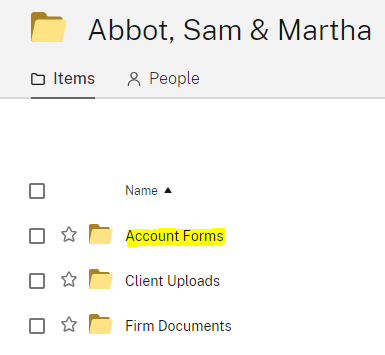
- Within the AUM individual client folders, create a folder titled “Client Documents” where you would file client intake/information forms, copies of driver’s licenses, statements, trust documents, insurance policies, marriage certificates, divorce decrees, tax forms, retirement statements, and any other documents that a client would provide.
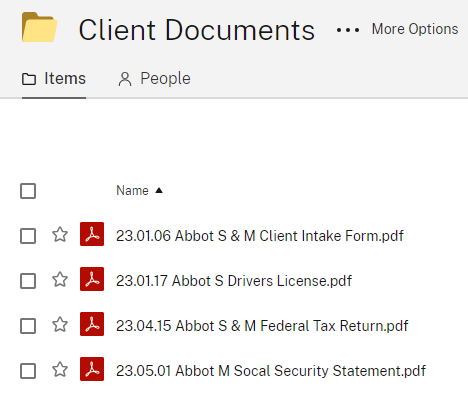
- Within the AUM individual client folders, create a folder titled “Firm Documents” where you would file risk tolerance questionnaires, IPS documents, firm agreements, billing documents, etc.
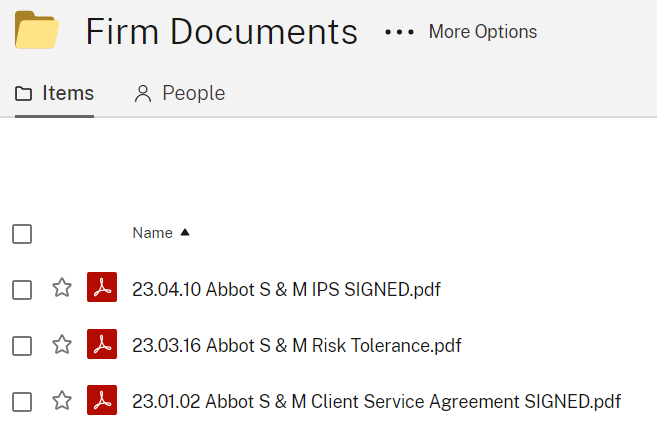
As you can see below, the combination of a simple file naming convention and file structure results in a quick and easy search for any document you need.
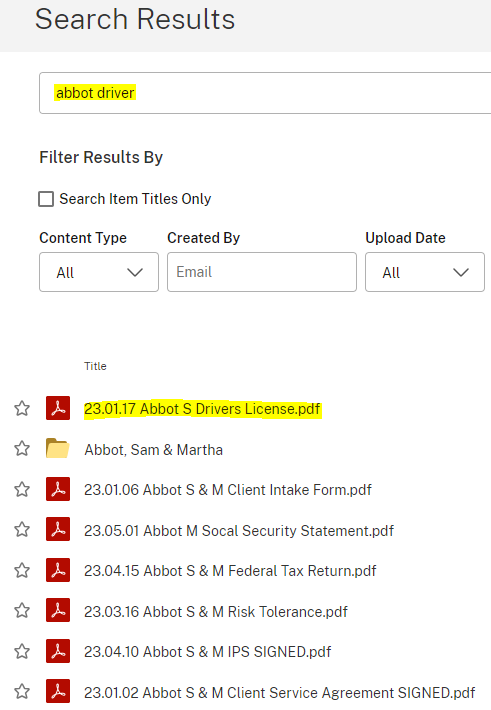
If you feel that your filing system could use a makeover, please let your TOI team know. We‘re experts at makeovers.
Happy filing!
Written by Tracey Arp, TOI Account Manager
